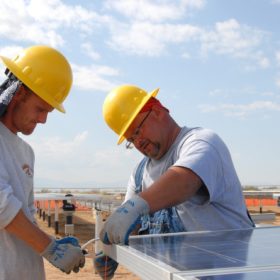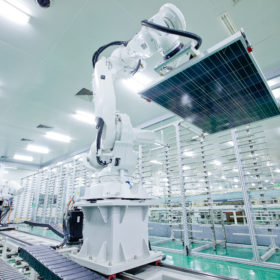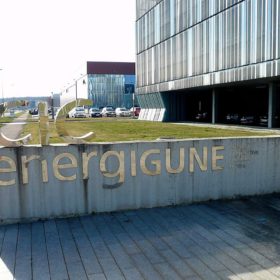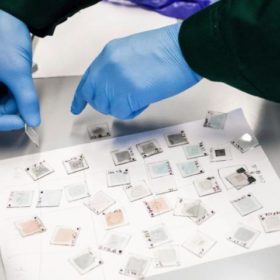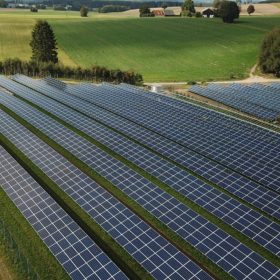A clean energy world would support millions of new jobs
A study from Finland’s Lappeenranta University of Technology has predicted solar and other renewables can provide a global energy jobs revolution – just as four European operations revealed recent struggles.
All-inorganic perovskite solar cell hits 16.1% efficiency
Researchers from the City University of Hong Kong have developed an all-inorganic perovskite cell with an electron-pair donor which offers a pair of non-bonding electrons. The cell was developed by applying that ‘Lewis base’ small molecule to passivate the inorganic perovskite film.
Jinko claims two more efficiency records for bifacial panels
The Chinese manufacturer has achieved conversion efficiencies of 21.82% and 22.49% for its p-type PERC and n-type HOT bifacial panels, respectively. The results were confirmed by Germany’s TÜV Rheinland.
Mind the gap
Fire safety engineering researchers have demonstrated increasing the gap between the modules of commercial PV arrays and flat roof surfaces is a decisive factor in reducing fire risks. Experiments have identified a critical gap height below which flame spread rate increases significantly.
Stretching exercises for crystalline silicon solar cells
Researchers from Saudi Arabia’s King Abdullah University of Science and Technology have created flexible solar cells made of crystalline silicon. They claim to have stretched a crystalline silicon cell’s surface by around 95% while maintaining conversion efficiency of around 19%.
New organic redox flow battery aims for €0.05/kWh/cycle by 2030
An international research group led by CIC EnergiGUNE, a Spanish research center, is designing new redox organic flow batteries. The researchers claim the batteries will offer longer duration, as well as higher power and energy densities, in a more environmentally sustainable format. The European Commission provided €3.8 million in funding for the initiative.
Putting the strain into engineering a more stable perovskite
U.S. researchers claim to have improved the stability of one of the most promising halide perovskites – α-FAPbI3 – by squeezing the compound’s crystal lattices. The authors of the research prevented the crystal assuming an hexagonal shape at the room temperatures required for a PV device to operate properly.
Japanese manufacturer acquires rights to produce 23.26% efficient CIGS perovskite cell developed by HZB and Kaunas University
The research group that developed the cell said the two materials used to produce it, dubbed 2PACz and MeO-2PACz, will soon be commercially available. The material consists of 1-2nm of self-assembled monolayers deposited on the surface of the perovskite by dipping it into a diluted solution.
A new perovskite material for solar applications
Barium zirconium sulfide is another chalcogenide perovskite being tested in relation to the development of more efficient solar cells. Researchers at Buffalo University, in New York state, have created a thin-film based on the material they say offers significant light absorption and good charge transport.
Best-worst method applied to select solar project locations
Scientists at the Beijing Institute of Technology have identified the most suitable areas for solar parks in the Chinese capital using a geographical information system and a new multi-criteria decision-making technique: the ‘best-worst’ method. They claim the approach can help establish technically and economically viable projects.
